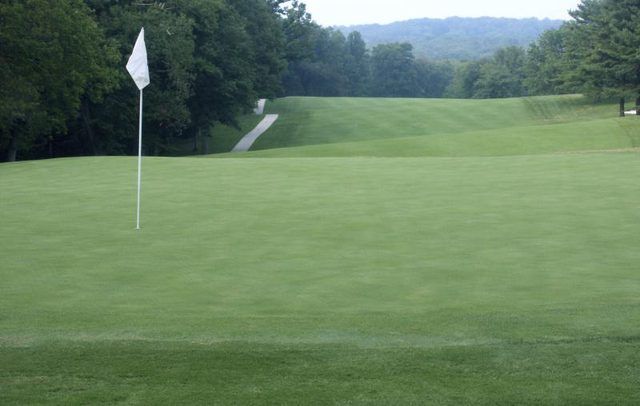Bulbs
Flower Basics
Flower Beds & Specialty Gardens
Flower Garden
Garden Furniture
Garden Gnomes
Garden Seeds
Garden Sheds
Garden Statues
Garden Tools & Supplies
Gardening Basics
Green & Organic
Groundcovers & Vines
Growing Annuals
Growing Basil
Growing Beans
Growing Berries
Growing Blueberries
Growing Cactus
Growing Corn
Growing Cotton
Growing Edibles
Growing Flowers
Growing Garlic
Growing Grapes
Growing Grass
Growing Herbs
Growing Jasmine
Growing Mint
Growing Mushrooms
Orchids
Growing Peanuts
Growing Perennials
Growing Plants
Growing Rosemary
Growing Roses
Growing Strawberries
Growing Sunflowers
Growing Thyme
Growing Tomatoes
Growing Tulips
Growing Vegetables
Herb Basics
Herb Garden
Indoor Growing
Landscaping Basics
Landscaping Patios
Landscaping Plants
Landscaping Shrubs
Landscaping Trees
Landscaping Walks & Pathways
Lawn Basics
Lawn Maintenance
Lawn Mowers
Lawn Ornaments
Lawn Planting
Lawn Tools
Outdoor Growing
Overall Landscape Planning
Pests, Weeds & Problems
Plant Basics
Rock Garden
Rose Garden
Shrubs
Soil
Specialty Gardens
Trees
Vegetable Garden
Yard Maintenance
St. Augustine Grass Vs. Bermuda
St. Augustine Grass Vs. Bermuda. Both St. Augustine grass (Stenotaphrum secundatum) and Bermuda grass (Cynodon dactylon) are warm-season grasses, meaning they thrive in temperatures between 80 and 90 degrees Fahrenheit and tend to lose their color in winter. Bermuda grass is the most widely grown, often used for playgrounds and athletic fields, but...

Both St. Augustine grass (Stenotaphrum secundatum) and Bermuda grass (Cynodon dactylon) are warm-season grasses, meaning they thrive in temperatures between 80 and 90 degrees Fahrenheit and tend to lose their color in winter. Bermuda grass is the most widely grown, often used for playgrounds and athletic fields, but St. Augustine grass has the advantage of being able to grow in shade.
Climate Comparison
St. Augustine grass will grow in U.S. Department of Agriculture plant hardiness zones 7a through 11. Bermuda grass will grow in USDA zones 6a through 9b.
Both Bermuda grass and St. Augustine grass are grown as turf in warm, humid region of the Gulf Coast and Florida. Bermuda grass is the most commonly grown grass in the arid region extending from the San Francisco Bay Area through Southern California, Arizona, New Mexico and central and southern Texas.
Both grasses will remain green throughout the year in frost-free climates, but St. Augustine grass stays green at lower temperatures.
St. Augustine grass will grow in shade, while Bermuda grass requires full sun. St. Augustine grass tolerates salty conditions better than Bermuda grass.
Growth Habit
Unmowed St. Augustine grass grows from 6 to 12 inches tall. Because Bermuda grass grows from 12 to 18 inches tall, it is sometimes grown for animal forage.
St. Augustine grass spreads by stolons, above-ground stems. Bermuda grass spreads more rapidly both by stolons, and rhizomes, underground stems.
St. Augustine grass has stiff blades. If it is properly maintained, it will grow into a thick, lush, dark green turf. Depending on the cultivar, Bermuda grass color ranges from light to dark green, and its texture varies from fine -- suitable for residential lawns -- to stiff -- best planted for lawns with heavy use and playing fields.
Mowing Heights
Depending on the cultivar, St. Augustine grass needs to be mowed between 2 and 4 inches high. Mow semidwarf cultivars from 2 to 3 inches high and regular cultivars from 3 to 4 inches high.
Bermuda grass can be mowed lower than St. Augustine grass. Begin mowing Bermuda grass from 3/4 to 1 1/2 inches high when it turns green in spring. Leave the clippings on the lawn. They will quickly rot and will not contribute to thatch.
Water Amounts
Irrigate St. Augustine grass when 30 percent to 50 percent of the lawn looks like it is wilting. It typically requires about 1 inch of water a week. You may need to water it periodically in windy, warm weather when it is dormant in winter.
The same wilting irrigation rule of 30 percent to 50 percent applies to Bermuda grass. Bermuda grass usually needs 1 to 1 1/4 inches of water a week. After you irrigate Bermuda grass, poke a screwdriver into the ground to make sure that the top 4 to 6 inches are moist.
Fertilizer Applications
It is impossible to know with certainty how much to fertilize either of these two grasses because fertilizing grass depends on climate, soil and other factors. Fertilizing chores for St. Augustine grass typically come later in the spring than Bermuda grass.
St. Augustine grass typically grows best with you give it 2 to 4 pounds of nitrogen per 1,000 square feet of lawn each year. Give it 1/2 to 1 pound of nitrogen per 1,000 square feet several weeks after the last expected frost in spring. The nitrogen should come in slow-release fertilizer with a 4-1-2 ratio of nitrogen, phosphorus and potassium per 1,000 square feet. Every one or two months from June through August apply 1/2 to 1 pound of nitrogen to every 1,000 square feet.
Fertilizing Bermuda grass is similar to fertilizing St. Augustine grass. Several weeks after the Bermuda grass is completely green in the spring, apply 1/2 to 1 pound of nitrogen in a slow-release fertilizer with a 4-1-2 ratio of nitrogen, phosphorus and potassium per 1,000 square feet. As with St. Augustine grass apply 1/2 to 1 pound of nitrogen to every 1,000 square feet every one or two months from June through August.
Spread fertilizer evenly on the surface by hand or mechanical spreader and water well. A mechanical spreader distributes the fertilizer more evenly.